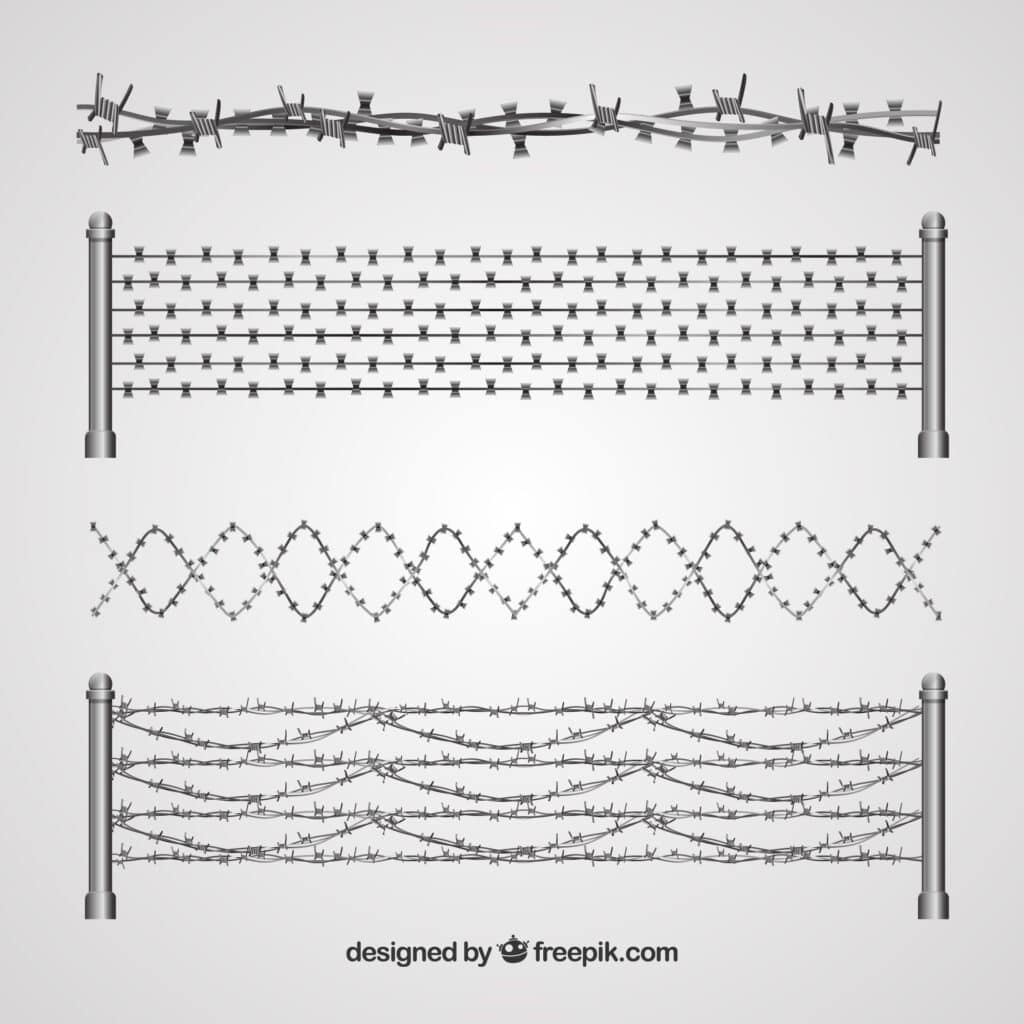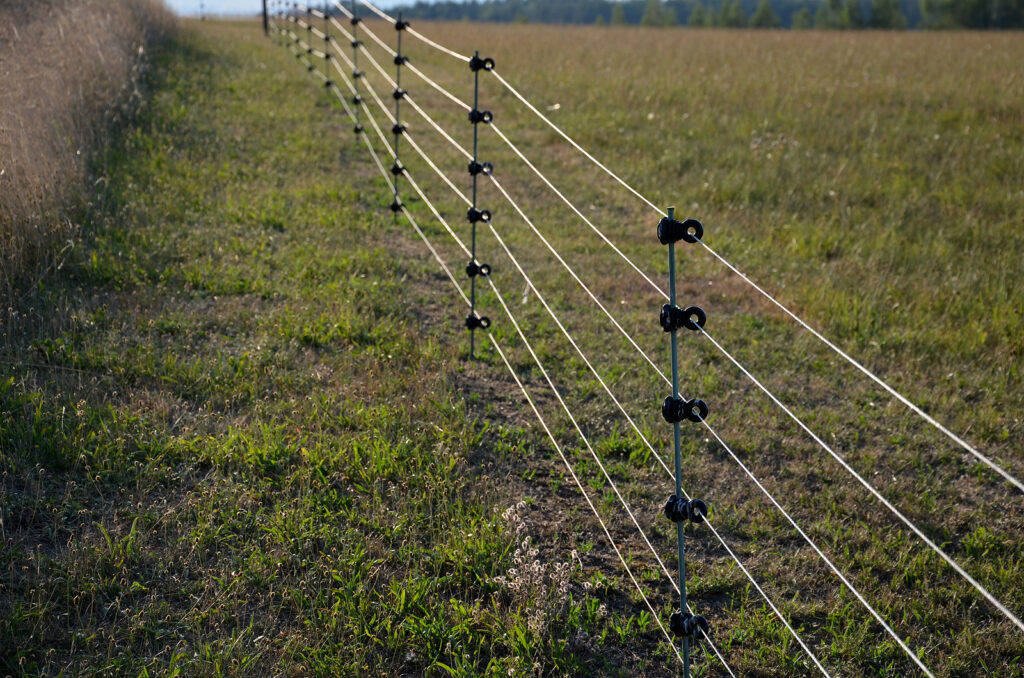Electric Fence Electricity Use
Electric fences have become an indispensable part of modern agriculture, offering vital security, containment, and safeguarding for our livestock and crops. Yet, just like any electrical system, delving into the intricacies of how these fences utilize electricity is key to ensuring their effective operation while keeping safety in check and minimizing any potential harm to the environment.
In this all-encompassing guide, we'll embark on a journey to unravel the nuances of electric fence electricity usage, exploring efficiency techniques, safety precautions, and the environmental footprint, all from a personal perspective.
The Importance of Electric Fences
Electric fences have brought about a transformative shift in the realm of property security and livestock handling, offering multifaceted benefits that extend beyond conventional fencing methods. These innovative barriers have become indispensable tools in safeguarding our assets and ensuring efficient livestock management.
Electric fences represent a cost-effective and resource-efficient alternative to traditional fencing solutions. Unlike their lumber or metal counterparts, electric fences require fewer materials and labor for installation, resulting in substantial cost savings. This advantage is particularly crucial for landowners and farmers seeking to protect expansive properties or manage large livestock herds.
One of the key attributes of electric fences is their ability to deliver a controlled, mild electric shock upon contact. This feature serves as an effective deterrent against animals attempting to breach the fence. Whether it's deterring curious wildlife from entering a garden or preventing livestock from wandering beyond designated boundaries, electric fences provide a non-lethal means of containment while minimizing the risk of injury to both animals and humans.
Why Electricity Use Matters
Electric fences are undoubtedly indispensable tools for property security and livestock management, but their operational electricity use warrants closer attention. Beyond the initial investment and installation, it's essential to consider the ongoing electricity cost associated with these fences.
Not only does excessive energy consumption result in higher utility bills, but it also carries significant environmental implications. Therefore, a comprehensive understanding of and effective strategies for optimizing electric fence electricity use are paramount, as they can translate into cost savings and a reduced ecological footprint.
- Cost Management: Electric fences, while highly effective, can contribute significantly to your electricity bills if not managed efficiently. Monitoring and controlling the energy consumption of your electric fence can lead to substantial cost savings over time. This financial aspect becomes particularly relevant for property owners with extensive fencing systems or those who employ electric fences on a large scale.
- Environmental Impact: The environmental consequences of electricity use should not be underestimated. Generating electricity often involves the burning of fossil fuels, which releases greenhouse gases into the atmosphere. Reducing electricity consumption, even in seemingly small applications like electric fences, contributes to a lower carbon footprint and aligns with broader sustainability goals.
- Optimizing Usage: To mitigate the electricity costs and environmental impact of electric fences, consider implementing optimization measures. This may involve periodic maintenance to ensure the fence is operating efficiently, such as checking for damaged wires or insulators. Adjusting the fence's voltage settings to the minimum required to deter animals effectively can also minimize electricity use.
- Alternative Power Sources: Exploring alternative energy sources, such as solar panels or battery-powered electric fences, can be a sustainable approach to reduce reliance on grid electricity. Solar-powered electric fences, in particular, harness energy from the sun to power the fence, offering a greener and cost-effective solution.
- Timed Operation: Utilizing timers or sensors to control when the electric fence is active can be a smart strategy. This ensures the fence is only powered when necessary, reducing energy consumption during off-peak times or when animals are not in close proximity.
- Educational Outreach: Educating others about the importance of responsible electricity use in electric fences can have a cascading effect. Encouraging neighbors or fellow property owners to adopt energy-efficient practices can collectively contribute to a more sustainable and cost-effective approach.

Electric Fence Basics
Electric fences are versatile and efficient tools employed in various applications, from livestock management to property security. To harness their full potential, it's essential to grasp the fundamental principles behind their operation and explore the different types of electric fencing systems available.
How Electric Fences Work
Electric fences rely on the principles of electrical conductivity and resistance to create a functional barrier. Here's a breakdown of how they operate:
- Circuit Creation: Electric fences create a closed circuit by sending an intermittent electric pulse along a conductive wire. This pulse typically comes from a charger or energizer, which serves as the power source.
- Contact Completion: When an animal or intruder touches the electrified fence, they inadvertently becomes part of the circuit, completing it. As a result, they receive a mild electric shock as the current flows through them.
Components of an Electric Fence
Understanding the components of an electric fence is crucial for designing and maintaining an effective system. The key elements include:
- Charger or Energizer: The charger or energizer is the core component of an electric fence system. It generates the electrical pulses that run through the fence wire.
- Fence Wire: The conductive wire carries the electrical charge throughout the fence. It is the interface through which the shock is delivered.
- Insulators: Insulators are essential devices that prevent the electrical charge from grounding, ensuring it remains within the fence wire.
- Posts: Posts provide structural support for the fence wire, keeping it in place and preventing sagging or damage.
- Grounding System: An integral part of the circuit, the grounding system facilitates the completion of the electrical circuit by allowing the charge to return to the charger. Proper grounding is essential for the fence's effectiveness.
Types of Electric Fencing
Electric fences come in various configurations tailored to specific needs and applications:
- Temporary Electric Fences: These fences are often used in rotational grazing systems. They are portable and easily moved to different locations, allowing farmers to manage their livestock's grazing patterns efficiently.
- Permanent Electric Fences: Designed for long-term use, permanent electric fences are commonly employed to define property boundaries, protect crops, or secure livestock. They provide durable and reliable security solutions.
- Portable Electric Fences: Portable electric fences offer a flexible solution for temporary animal containment or exclusion. They are frequently used in situations where temporary enclosures are needed, such as during construction or events.

Calculating Energy Consumption
When it comes to electric fences, optimizing energy consumption is not only cost-effective but also crucial for environmental sustainability. To effectively manage energy use, it's essential to grasp the fundamental electrical parameters and calculate daily consumption while also considering the choice between battery and mains-powered chargers.
Voltage, Current, and Power
Understanding these core electrical parameters is vital in managing electric fence energy consumption:
- Voltage: Voltage represents the force or pressure of the electric current. In the context of electric fences, it determines the intensity of the electric shock delivered to deter intruders or animals.
- Current: Current signifies the flow of electric charge. It is directly related to the strength of the electric shock and influences the effectiveness of the fence.
- Power: Power is the rate at which electrical energy is consumed. It's a key metric in assessing the overall energy consumption of your electric fence system.
Estimating Daily Energy Use
To effectively manage energy consumption, calculate your electric fence's daily energy use. Factors to consider include:
- Charger Output: Start by assessing the charger's output rating, usually measured in joules or volts. This indicates the energy the charger delivers with each pulse.
- Fence Length: Determine the total length of the fence that requires electrification. Longer fences may require more energy to maintain consistent voltage levels.
- Operating Duration: Consider how long the fence is electrified each day. Some systems operate continuously, while others are active only during specific periods.
By multiplying the charger's output by the duration of operation and accounting for fence length, you can estimate daily energy consumption. This calculation is invaluable when selecting an appropriately sized charger to ensure it meets your specific needs without overconsuming electricity.
Battery vs. Mains-Powered Electric Fences
Choosing between battery-powered and mains-powered chargers requires careful consideration of your specific circumstances:
- Battery-Powered Chargers: These chargers offer mobility and flexibility, making them suitable for remote areas without access to mains electricity. However, they necessitate periodic battery replacement, which can be a recurring cost.
- Mains-Powered Chargers: Mains-powered chargers are reliable and do not rely on batteries. They are often more practical for locations with consistent access to electricity. However, they may not be the best option in remote or off-grid areas.
Ultimately, the decision between battery and mains-powered chargers hinges on your unique requirements and location. Weigh the advantages and drawbacks to determine which option aligns best with your energy management goals.
Selecting the Right Charger
Selecting the right charger for your electric fence is a critical decision that directly impacts its performance, cost-effectiveness, and environmental footprint. To make an informed choice, it's essential to explore the various charger types and capacities, consider the advantages of solar-powered versus plug-in chargers, and ensure proper sizing for optimal efficiency.
Charger Types and Capacities
Electric fence chargers come in several types, each with its unique characteristics:
- Low-Impedance Chargers: These chargers offer reliable and consistent voltage output, making them suitable for longer fence lines. They are known for their energy efficiency and effectiveness in deterring animals.
- Solid-State Chargers: Solid-state chargers are durable and low-maintenance. They utilize modern electronics to provide a continuous and consistent shock, ensuring the fence's effectiveness.
- Pulsed Chargers: Pulsed chargers deliver intermittent electric shocks at regular intervals. They are energy-efficient and often favored for their ability to conserve power while effectively deterring animals.
Choosing the right charger type depends on factors such as your fence's length, the type of animals you want to deter, and your specific energy efficiency goals.
Solar-Powered vs. Plug-In Chargers
The choice between solar-powered and plug-in chargers involves considerations of sustainability and practicality:
- Solar-Powered Chargers: Solar chargers harness energy from the sun, making them an eco-friendly option. They are particularly suitable for remote locations where access to mains electricity is limited. While they reduce electricity costs and environmental impact, they require adequate sunlight for consistent operation.
- Plug-In Chargers: Plug-in chargers provide a consistent power source from mains electricity. They are dependable and operate consistently, making them a practical choice for areas with readily available electricity. However, they may increase overall electricity costs.
When deciding between these options, weigh the benefits of renewable energy and reduced electricity bills offered by solar chargers against the reliability and convenience of plug-in chargers.
Sizing Your Charger for Efficiency
To ensure your electric fence operates efficiently without unnecessary energy consumption, it's crucial to size your charger appropriately:
- Fence Length and Type: Consider the total length of the fence that requires electrification and its type. Different fence configurations have varying energy requirements. Overpowering your fence with a charger that exceeds its needs can lead to unnecessary electricity consumption and higher costs.
- Voltage Output: Verify that the charger's voltage output matches the requirements of your fence and the type of animals you intend to deter. Proper sizing ensures effective deterrence without excessive energy use.

Installation and Maintenance
Electric fences are effective tools, but their installation and maintenance play a crucial role in ensuring their reliability and efficiency. Here's a closer look at key considerations for getting the most out of your electric fence system:
Proper Grounding Techniques
Effective grounding is the foundation of an electric fence's functionality. It completes the electrical circuit, allowing the charge to flow through the fence wire effectively. To ensure reliable grounding:
- Use Appropriate Ground Rods: Select high-quality ground rods that are long enough to penetrate moist soil. Multiple rods may be necessary in dry or rocky soil conditions.
- Keep Ground Connections Clean: Maintain a clean and corrosion-free connection between the ground rods and the charger's grounding terminal. Periodically check and clean these connections to prevent energy wastage.
- Ensure Moisture Retention: Grounding rods should be placed in areas where moisture is readily available. Dry soil reduces the effectiveness of grounding, leading to poor fence performance.
Fence Wire Material and Insulators
The choice of fence wire material and insulators significantly impacts energy transmission and overall fence performance. To optimize your electric fence system:
- Select High-Quality Wire: Invest in well-insulated, high-conductivity wire to minimize energy loss. Copper or aluminum wires are commonly used due to their excellent conductivity.
- Use Insulators Wisely: Properly installed insulators are essential to prevent the charge from grounding through fence posts. Place insulators strategically to maintain electrical isolation between the fence wire and posts.
- Regularly Inspect Insulators: Over time, insulators may deteriorate or become damaged. Regularly inspect them for cracks or wear and replace any compromised insulators promptly.
Regular Inspections and Repairs
Ongoing maintenance is vital for the continued effectiveness of your electric fence system. Here are some maintenance practices to keep in mind:
- Scheduled Inspections: Establish a routine for inspecting your electric fence, especially during seasons of harsh weather or heavy vegetation growth.
- Identify Faults Promptly: Look for signs of damage, wear, or malfunction in fence components such as wires, insulators, and the charger. Promptly address any issues to prevent energy loss and maintain deterrent effectiveness.
- Keep Vegetation Clear: Overgrown vegetation can come into contact with the fence, potentially grounding it or causing damage. Regularly trim or clear vegetation around the fence line to ensure its integrity.
- Battery Maintenance: If your electric fence system relies on a battery, monitor its charge level and replace it as needed to avoid interruptions in fence operation.
Conclusion
In my exploration of electric fence electricity use, I've developed a profound appreciation for these indispensable tools in modern agriculture and security. They offer an array of benefits, but I've also learned that efficient electricity management is vital not only for cost savings but also for reducing our environmental impact.
Embracing sustainable practices such as solar power and timed operation, along with understanding the intricate components of electric fences, has instilled in me a sense of responsibility for making these systems both efficient and eco-friendly.
As I continue my journey in agriculture and property management, I'll carry forward the commitment to responsible electricity use in electric fences as a personal mission. It's not just about safeguarding livestock and crops; it's about contributing to a greener and more sustainable future, one where innovation and environmental consciousness go hand in hand to ensure the safety of our assets and the preservation of our planet.

